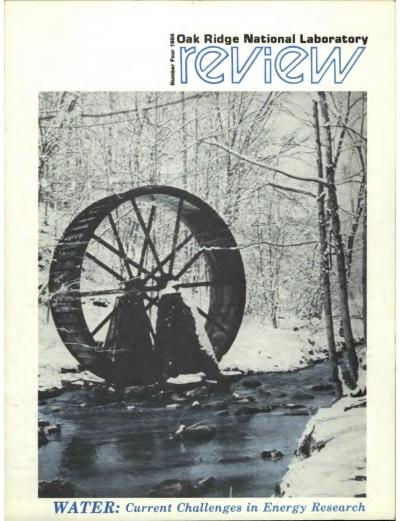ORNL Review v17n4 1984.pdf

- Acid Rain and Dry Deposition of Atmospheric Pollutants: ORNL Studies the Effects. Acidic precipitation and atmospheric deposition may be involved in the decline of some forests and in the elevation of aluminum levels in streams. ORNL researchers play an important role in pinpointing the effects of atmospheric pollutants on vegetation, fish, and surface waters.
- Photosynthetic Water Splitting. Using light and algae or nonliving systems, ORNL scientists have photosynthetically split water into oxygen and hydrogen, a clean fuel and chemical feedstock.
- Simulating Processes Within the Earth: Experimental Geochemistry at ORNL. Geochemists at ORNL are using unique devices to simulate in a very short time the chemical processes that form rocks and minerals. The basic research may help solve problems affecting geothermal power, nuclear waste isolation, and exploration for ores and natural gas.
- Drinking Water and Cardiovascular Disease. An epidemiological study of Wisconsin farmers indicates that persons with cardiovascular disease drink softer water than persons without the disease.
- Environmental and Health Impacts of Water Chlorination. ORNL chemist Bob Jolley was the first to identify potentially hazardous organic compounds formed by adding chlorine to wastewater. He has also led an effort to identify drinking water compounds that cause thyroid disease.
- Groundwater Pollution: Environmental and Legal Problems. A book edited by two ORNL researchers discusses the implications of groundwater pollution caused by human discharges of synthetic chemicals. ORNL scientists' attempts to monitor and prevent deteriorative groundwater quality are explored.
Departments
- From the Editor. Water is this issue's theme
- Books. E. G. Silver reviews Before It's Too Late: A Scientist's Case for Nuclear Energy.
- Take a Number
- Technical Capsules Structure of water studied; Iodine hydrolysis and reactors; ORNL has four IR 100 winners
- Awards and Appointments
- Reader's Comment

